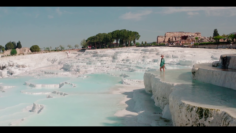The House of the Virgin Mary
Anatolia has been a center of interfaith tolerance, embracing many beliefs for centuries. Beyond being a crossroads of major trade routes, it has witnessed important religious events that shaped human history and served as a refuge for many significant figures who faced persecution and were forced to leave their homelands.
One such figure is the Virgin Mary, the mother of Jesus. According to many sources, after the crucifixion of Jesus, the Virgin Mary departed from Jerusalem and settled in Ephesus with Saint John, one of Jesus’ apostles and the author of the four Gospels. It is believed that she spent the remainder of her life here and passed away in this city or was assumed into heaven at the age of 101.
Additionally, the Ecumenical Council of 431 AD, a significant event in Christian history, was held in this region. During the council, a church dedicated to the Virgin Mary was built near her house.
Today, the house, which is known as the House of the Virgin Mary, is located on Mount Koressos (Bülbüldağı), near the ancient city of Ephesus in İzmir.
Following Pope Paul VI’s visit in 1967, many popes have also visited this site. Considered a pilgrimage destination by Christians, it welcomes millions of visitors each year. Religious ceremonies are held here on August 15th, the date believed to mark the Assumption of Mary.
The House of the Virgin Mary, considered sacred not only by Christians but also by Muslims, stands as a powerful symbol of cultural and religious diversity and the peace in Anatolia that continues to this day.















